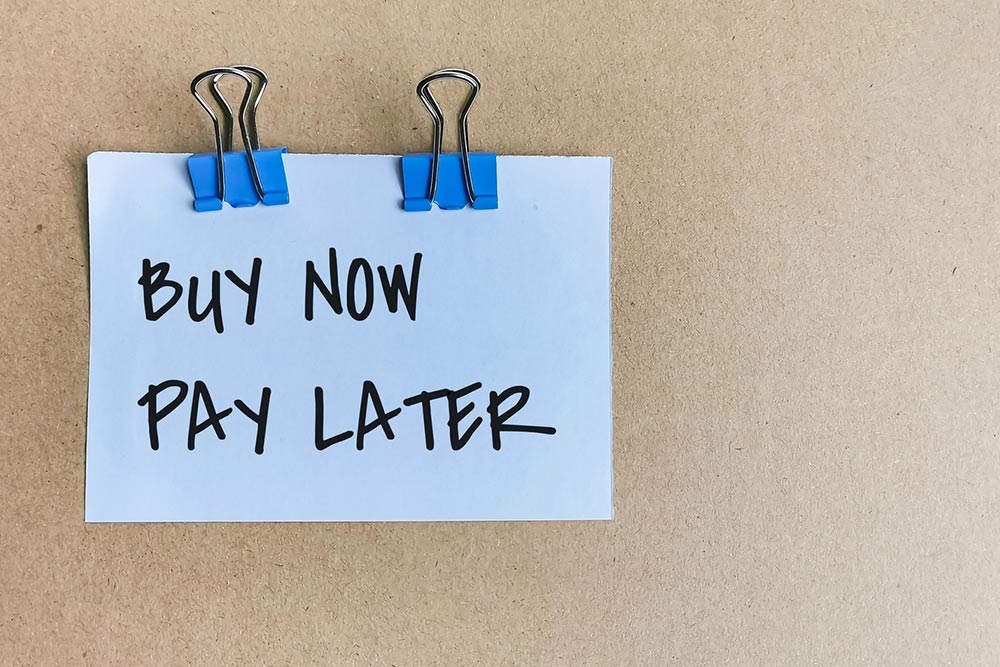7 mistakes to avoid while using buy now, pay later

Buy now, pay later is one of the latest financing trends, often considered a way of making purchases easier for customers. Here, using a third-party provider, one can make payments on those purchases later. While this may seem quite convenient, the offer comes with its own risks that can result in an unnecessary debt burden. To avoid this, it helps to be wary of the following common buy now, pay later mistakes:
1. Ignoring the fine print
This is one of the most common buy now, pay later people tend to make. Here, they may be tempted to skip reviewing the jargon-heavy and complex terms and conditions. However, this can cause more harm than one expects, as the fine print contains all the important guidelines, such as late payment fees, number of installments, payment methods, and other crucial buying information. Checking the terms thoroughly can help one avoid a lot of trouble while using the buy now, pay later (BNPL) payment method.
2. Making too many purchases
It is common to develop a false sense of security when accessing the buy now, pay later offer for a purchase. One can end up assuming that they will always have enough funds to pay off dues later. So, they may impulsively overspend on things they may not need. Over time, unchecked spending can add up, making for an unexpectedly large bill. Further, one may incur extra fees and penalties if the bills are not paid on time. Finally, overutilizing the buy now, pay later option can result in an ever-increasing debt, which will put a dent in the credit score.
3. Buying unaffordable things
Along with impulsive buying, spending beyond their means is another mistake people make with BNPL. This problem is also common among credit card holders, who may end up buying an otherwise unaffordable big-ticket item with their card and fail to pay back the bill on time. What follows is the piling up of exorbitant interest charges. While there are no interest charges with buy now pay later, there is always the risk of missing payments. This means the payment will go on accumulating over time until one has the funds to pay it all off. This can create a lot of stress while managing personal finances.
4. Delayed payments
One may be familiar with monthly billing cycles that are common with most personal financing options such as loan EMIs and credit cards. Consequently, one may only end up making payments toward their buy-now-pay-later purchase at the end of each month. However, most buy now, pay later plans do not follow a monthly payment cycle. Instead, they have a weekly or biweekly billing schedule. So, if one does not keep track of BNPL payments, they will miss the deadline and incur late payment fees, which can add up over time. A good way to avoid this mistake is to set reminders for whenever the bills are due to be paid.
5. Not checking the return policies
Usually, buy-now-pay-later purchases differ from regular purchases. So, the return policies on the bought items can differ as well. One may not be able to simply go back to the store, return the item, and expect a full refund immediately. Some stores may not allow any return and refunds on BNPL purchases. If they do allow returns, the refund may go directly to the BNPL provider instead of the customer. To avoid any confusion, one must thoroughly check the seller’s return and exchange policies before opting for BNPL.
6. Forgetting about existing debt
Like loans and credit card bills, buy now, pay later plans are also a form of debt. The only difference is that most of these plans do not attract interest charges like loans and credit cards. Nevertheless, it is important for one to consider their existing debt and pending bill payments before signing up for a BNPL plan. Otherwise, one may feel overwhelmed with the ever-increasing debt, miss BNPL payments, incur late payment fees, and increase their overall debt burden. This can also negatively affect credit score, as the credit report will show that one depends too much on financing options to pay for products and services./
7. Not setting up autopay
While it is important to keep track of BNPL repayment, a weekly or biweekly payment cycle can be trickier to track, especially if one has more one has other bills to pay, such as for credit cards, mortgages, or loans. To avoid the risk of being penalized or charged with extra fees when choosing buy now, pay later, one can set up autopay for making payments. Here, one must exercise caution to avoid their account balance hitting zero. So, while one should set up autopay to avoid missing BNPL repayment deadlines, one should keep an eye on their account balance to see if they have enough funds.
So, being aware of the terms and conditions while making a purchase, considering existing debt, not going overboard with BNPL, and making arrangements to avoid late payments can help one get the most out of buy now, pay later offers.